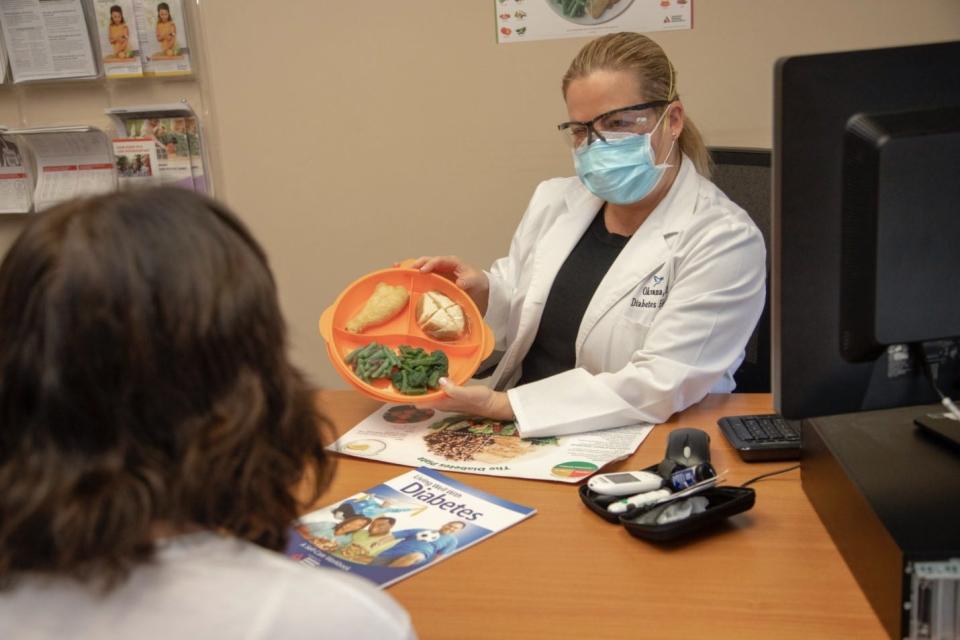Three tips to help control type 2 diabetes during COVID-19| Opinion
With the persistent spread of COVID-19 in the state of Tennessee and across the country, many people are once again wearing masks and avoiding large crowds.
This is likely true for the 56% of Americans who have an increased chance of COVID-19 complications, such as type 2 diabetes.
For the 30 million Americans with this disease, along with the 88 million people with prediabetes, it is important to note that type 2 diabetes is a leading cause of medical complications, including heart disease and kidney damage.
Type 2 diabetes is often costly to individuals and the health system more broadly, contributing about $327 billion per year in medical expenses.
Hear more Tennessee Voices: Get the weekly opinion newsletter for insightful and thought provoking columns.
There are methods that can help change type 2 diabetes from a lifelong, chronic disease requiring medications, to a condition that can be put into remission.
Here are three tips to consider during November’s National Diabetes Month and beyond:
Monitor your body mass

While body mass index (BMI) has potential shortcomings, especially for muscular athletes, this calculation of height compared to weight may be a helpful measure to monitor.
That’s because people with moderately elevated BMI levels may have an increased risk of developing complications related to diabetes. To monitor your BMI, check with your primary care physician or use an online calculator.
If your BMI indicates a possible risk, a weight loss program may help. In fact, research shows that when overweight people lose just 5% of their initial weight, it can reduce the risk of developing type 2 diabetes by more than 50%.
For support shedding unwanted pounds, check with your employer or health plan for resources, such as online weight-loss programs that focus on helping users build healthier daily habits.
Hear from Tennessee's Black Voices: Get the weekly newsletter for powerful and critical thinking columns.
Use interval eating
The cliché “you are what you eat” rings true when it comes to preventing or managing obesity and diabetes, but when and how you eat also may be relevant. Also called intermittent fasting or time-restricted eating, interval eating alternates periods of fasting and non-fasting during the day or throughout the week.

Lifestyle changes to consider include waiting at least an hour after waking up before eating breakfast and avoiding food within three hours of sleep. Plus, people may give attention to the order in which they eat, starting each meal with a lean protein (chicken, fish or turkey), followed by a vegetable (broccoli, green beans or carrots) and ending with a carbohydrate (brown rice, pasta or sweet potato).
This ordered approach may lead to lower post-meal glucose and insulin levels for people with type 2 diabetes.

Your state. Your stories. Support more reporting like this.
A subscription gives you unlimited access to stories across Tennessee that make a difference in your life and the lives of those around you. Click here to become a subscriber.
Consider after-meal walks
People seeking to better control their blood sugar levels and weight may also consider taking short walks after eating meals or snacks, especially those with added sugars such as juice or desserts.
Post-meal walks may help the body move sugar from the blood into muscle cells, helping normalize blood sugar levels. Whenever possible, make time for a 15-minute walk after meals, which can reduce the risk of blood sugar spikes.
The pandemic may be creating stress for many Americans, especially people with chronic health conditions such as type 2 diabetes. By considering these tips, these challenging times may serve as a catalyst for people to help improve their health and reduce the possible risk of complications from COVID-19.
Dr. Donna O’Shea is chief medical officer of population health at UnitedHealthcare.
This article originally appeared on Nashville Tennessean: How to address type 2 diabetes amid COVID-19 pandemic

